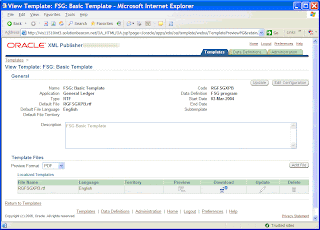I speak from personal experience on this topic since I'm often stumbling through the various acronyms used for these products.
Most of us think that Fusion Middleware refers to Service-Oriented Architecture, Identity Management and Business Process Management since these are usually the emphasis of Oracle's presentations. In actuality there's an amazing breadth of other solutions when you dig into Oracle's offering.
To add to the complexity, some of Fusion Middleware products are further grouped into Suites for marketing purposes. That's good because the Suites are targeted to specific business needs. If you are looking for Business Process Management it's nice to find that term. The downside is that it can be confusing when the same product can be found in multiple Suites.
For example, compare the Event Driven Architecture Suite and the Service-Oriented Architecture Suite components. You will find that they both include Business Activity Monitoring, the Enterprise Service Bus, Enterprise Messaging (Java Messaging), and Business Rules. Then they add one or more other different Fusion Middleware products.
So, if we really want to understand the Fusion Middleware products it's best to break them down individually and understand their general capabilities. I've done that in a PDF file available here. Once you see it, you'll understand why I didn't just publish it here.
For those who are too busy/lazy to peruse the PDF file, here's a brief overview of the various components of the larger product groups/suites in the Fusion Middleware and what they currently include.
- The Application Server is the core component of Fusion Middleware. It provides J2EE 1.4 support, Web Services Support, Enhanced Messaging, Transaction Management, Security Features, Clustering, Grid Computing, and Monitoring & Management.
- The Business Integration Suite includes products like Master Data Management, XML Gateway, B2B Integration and the BPEL Server.
- The Business Intelligence Suite includes Warehouse Builder, OBIEE, BI Publisher, BI Answers, BI Discoverer and the Hyperion products.
- The Business Process Architecture Suite provides the ability to model, simulate and publish business process models.
- The Business Process Management Suite is a superset of the Business Process Analysis Suite and the Service-Oriented Architecture Suite.
- The Collaboration Suite includes groupware, unified messageing and real-time collaboration products.
- The Content Management Suite supports content management, publishing, tracking and distribution with retention policy capability.
- The Event Driven Architecture Suite is a marketing package that includes products that generate and report on events.
- The Identity and Access Management Suite provides LDAP, Single-Sign On, Federation, and Virtual Directories.
- The Middleware for SMB provides a lower-end solution that meets the needs of Small and Medium-sized busineses using the Standard Edition One of the application server.
- The Middleware for Applications is a marketing package that includes middleware products for each of the application suites.
- The Service Delivery Platform offers new communication options including Residential VoIP, virtual PBX and the Communication and Mobility Server.
- The Service Oriented Architecture Suite includes those products used to define, orchestrate, monitor, secure and tune the execution of Web Services.












